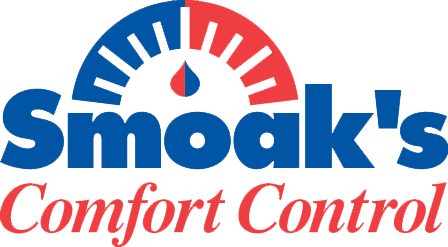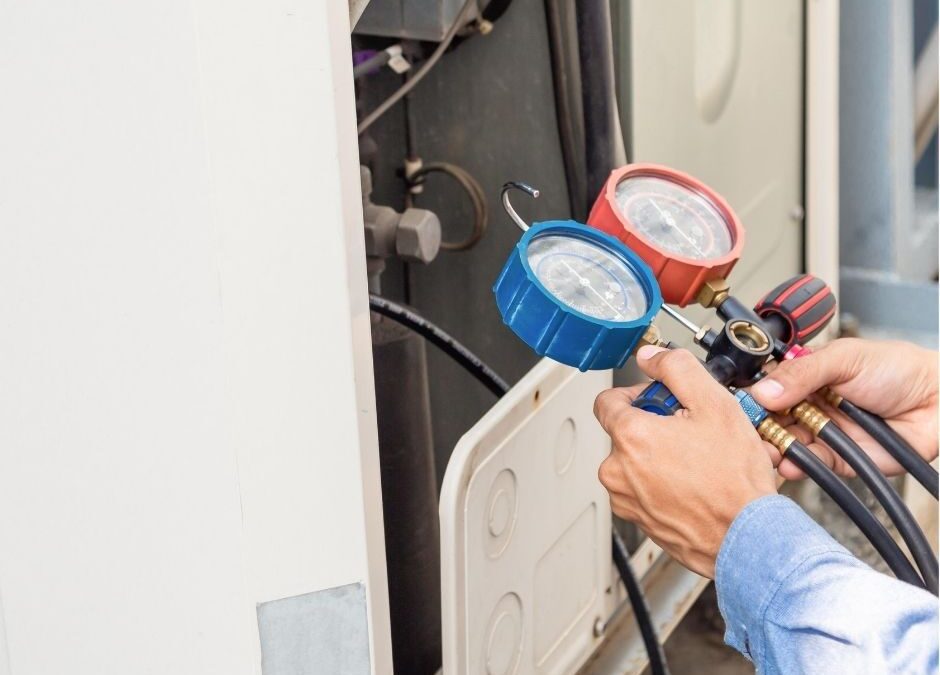Starting in 2025, HVAC systems have transitioned to new refrigerants, such as R-454B and R-32, to meet increasingly stringent environmental standards. This transition impacts how you cool your home, your energy bills, and maintenance costs. This guide covers everything you need to know about the new refrigerant and how to prepare for these changes.
Key Takeaways
- The 2025 refrigerant transition mandates the phase-out of R-410A in favor of eco-friendly alternatives, such as R-454B and R-32, which significantly reduce greenhouse gas emissions.
- Homeowners should prepare for this transition by evaluating current HVAC systems and considering upgrades to compatible, energy-efficient units to avoid rising maintenance costs and ensure compliance with new regulations.
- New refrigerants enhance energy efficiency and safety while aligning with international climate agreements, promoting long-term environmental sustainability and potentially reducing overall energy expenses.
What is a Refrigerant and Why is it Needed?
Refrigerants are vital to HVAC systems, facilitating both cooling and heating. These chemicals can transition from liquid to gas and back, effectively regulating indoor temperatures. As refrigerants evaporate, they absorb heat, and when they condense, they release it. This cycle enables HVAC systems to maintain a comfortable temperature throughout our homes.
In air conditioning systems, refrigerants flow through coils, absorbing heat from the indoor air to cool it. Ensuring our living spaces stay comfortable during hot summer days. Without refrigerant, our air conditioners and heat pumps would be unable to transfer heat efficiently, making modern climate control impossible.
Overview of the 2025 Refrigerant Transition
Starting in 2025, the HVAC industry expects to undergo a significant shift as the EPA’s refrigerant regulations mandate the phase-out of R-410A refrigerant, aiming to reduce greenhouse gas emissions and combat climate change. Since the start of January 2025, R-410A will be replaced with newer, eco-friendly refrigerants such as R-454B and R-32, which have significantly lower global warming potentials (GWPs).
New refrigerants, such as R-454B, are more eco-friendly, with a GWP approximately 78% lower than that of R-410A, offering a more sustainable option for HVAC systems. Manufacturers are required to adopt low GWP refrigerants with a GWP of 700 or lower by 2025, aligning with international climate agreements aimed at reducing harmful emissions, especially those with high global warming potential and significantly lower GWP. Transitioning to these new refrigerants is a crucial step toward sustainability. By transitioning away from higher Global Warming Potential (GWP) refrigerants, the HVAC industry supports global efforts to combat climate change and reduce greenhouse gas emissions, thereby safeguarding our planet.
Benefits of New Refrigerants
Switching to refrigerants like R-454B offers numerous benefits for the environment, home, and business owners. A major advantage is the significant reduction in greenhouse gas emissions, as R-454B has a much lower GWP compared to R-410A. This transition aligns with international agreements aimed at reducing harmful emissions and mitigating global warming. Beyond environmental advantages, new refrigerants also enhance energy efficiency and energy-efficient systems. Systems utilizing these refrigerants are designed for optimal operation, resulting in significant energy savings over time. This increased efficiency not only helps reduce energy bills but also lessens the strain on power grids during peak usage times.
Additionally, the new refrigerants guarantee consistent and reliable performance over a longer lifespan and do not deplete the ozone layer, making them environmentally safer. By choosing systems that use these newer refrigerants, homeowners can enjoy reliable climate control while contributing to a healthier planet.
The Impact on Current HVAC Systems
The shift to new refrigerants will significantly impact current heating, ventilation, and air conditioning (HVAC) systems. Many existing systems using R-410A or R-22 will gradually phase out, making the maintenance of these systems more challenging and costly as the previous refrigerants become less available. Homeowners should plan by considering the replacement of older systems HVAC systems with newer, compliant units to avoid unexpected costs and ensure reliable performance. Although existing systems can still be serviced, potential issues due to phased-out refrigerants should be considered.
Compatability Concerns
A significant challenge with the refrigerant transition is compatibility. Most older HVAC systems can’t accommodate the new refrigerants, often necessitating complete replacement since retrofitting isn’t viable. Although replacing the entire existing system may seem daunting, it is often the most cost-effective solution for achieving reliable performance and overall system performance in whole-home systems. Homeowners should view this as a necessary investment to comply with new regulations and maintain efficient, safe HVAC operation.
Maintenance and Repair Costs
With the declining availability of older refrigerants, maintenance and repair costs for HVAC systems using them are expected to rise significantly. Recharging a system after a refrigerant leak will become more expensive, increasing overall maintenance costs. Homeowners should anticipate higher costs and consider upgrading their systems to avoid escalating expenses tied to older refrigerants. Investing in newer systems can save money in the long term through reduced maintenance costs and improved energy efficiency.
Cost Implications of the New Refrigerants
The shift to new refrigerants will have a financial impact on homeowners. The cost of new HVAC systems is increasing due to the use of eco-friendly refrigerants and the addition of safety features, such as leak detection sensors and shut-off valves, which are essential for safe operation.
However, the initial higher costs are offset by the long-term savings from improved energy efficiency. Newer HVAC systems, compared to current systems, are designed for greater energy efficiency, resulting in significant reductions in energy bills over time. Additionally, by reducing greenhouse gas emissions, these systems contribute to a more sustainable environment, a valuable benefit that extends beyond monetary savings.
Replacing an air conditioner after phaseout may increase costs by up to 30% due to higher manufacturing prices, but the manufacturers’ switch cost-benefit analysis supports investing in newer systems. Homeowners will benefit from energy savings and a positive environmental impact, making the transition a worthwhile endeavor.
Safety of the New Refrigerants
Safety is a top priority with the new refrigerants. Although mildly flammable, they pose a low danger in closed systems and have a flammability level comparable to standard household products, ensuring residential safety and minimizing the risk of flame propagation. HVAC systems using new refrigerants now include advanced safety features, such as a refrigerant detection system, to monitor and reduce refrigerant concentration in the event of leaks. This meets stringent safety standards, providing peace of mind with a new system.
How to Prepare Your Home for the Transition
Preparing for the refrigerant transition involves careful planning and proactive measures. Begin by evaluating your current HVAC system to determine if upgrades are necessary. An inspection by a professional HVAC technician can help assess your existing system. Replacing old AC units using R-410A before the 2025 regulations take effect can significantly reduce installation costs. Collaborating with certified HVAC technicians ensures you get the necessary guidance and expertise for a smooth transition. Following installation instructions and adhering to the one-year grace period can further ease the installation process. These steps ensure that HVAC systems are future-ready, maintaining comfort and efficiency while complying with new regulations and installation requirements.
Working with Certified HVAC Technicians
Working with certified HVAC technicians is crucial to safely and effectively navigate the 2025 refrigerant changes. These professionals have the expertise to handle refrigerants properly, ensuring all repairs and recharges meet the latest safety standards. If you notice a change in your system’s operation after a refrigerant leak, contact a certified technician immediately. Manufacturers are incorporating safety features, such as leak detection sensors and shut-off valves, to manage refrigerant leaks better. Certified technicians are highly trained to operate these advanced systems. A qualified technician can evaluate your HVAC system for compatibility with new refrigerants, ensuring compliance with upcoming regulations.
Environmental Impact of the Transition
Transitioning to alternative refrigerants is crucial for meeting international environmental standards. It significantly helps minimize the impact of HVAC systems on climate change and ozone depletion. New refrigerants, such as R-454B, produce lower greenhouse gas emissions, thereby enhancing environmental safety. This shift supports the anticipated recovery of the ozone layer by 2065 and aligns with global efforts to reduce greenhouse gases. The refrigerant phase-down aims to replace high-GWP refrigerants with lower global warming potential alternatives, thereby reducing the environmental impact of HVAC systems and promoting non-ozone-depleting solutions.
By adopting eco-friendly refrigerants, the HVAC industry contributes to a more sustainable future. These changes help mitigate climate change, reduce the carbon footprint, and promote long-term environmental conservation. The 2025 refrigerant transition represents a significant shift towards sustainability in the HVAC industry. Newer refrigerants, such as R-454B, offer numerous benefits, including reduced greenhouse gas emissions, improved energy efficiency, and enhanced safety features. These changes are essential for meeting international environmental standards and mitigating the effects of climate change.
As a homeowner, it is crucial to prepare for these changes by assessing your current HVAC systems, working with certified technicians, and considering system upgrades. By taking proactive steps, you can ensure your home remains comfortable, efficient, and compliant with new regulations. Embrace the transition as a step towards a greener and more sustainable future.
Frequently Asked Questions
What are the new refrigerants for HVAC systems in 2025?
The new refrigerants, including R-454B and R-32, offer significantly lower global warming potentials than R-410A. This transition reflects a commitment to reducing the environmental impact of refrigeration technologies.
Will my current HVAC system be compatible with the new refrigerants?
Most older HVAC systems are incompatible with new refrigerants, often necessitating a complete replacement of the system. It is advisable to consult a professional for an assessment of your specific system.
How will the new refrigerants affect maintenance and repair costs?
The transition to new refrigerants is likely to result in increased maintenance and repair costs for older systems that utilize phased-out refrigerants. Upgrading to newer systems is advisable, as it can help mitigate these rising costs.
Are the new refrigerants safe to use in my home?
The new refrigerants are considered safe for residential and light commercial use, as they pose a low danger in closed systems despite being mildly flammable. It is essential to follow proper guidelines during installation and maintenance to ensure safety and prevent potential hazards.
How can I prepare my home for the refrigerant phase-out?
To prepare your home for the refrigerant transition, it is essential to assess your current HVAC systems and schedule an inspection with a professional technician.
If you’re considering a system upgrade or have questions about how these new regulations might affect your home or business, our team is here to help. At Smoak’s Comfort Control, we stay ahead of industry updates, so you don’t have to—ensuring your comfort, safety, and peace of mind every step of the way. Contact us today by calling (843) 556-9550 or completing our services request form on our website to learn more!

